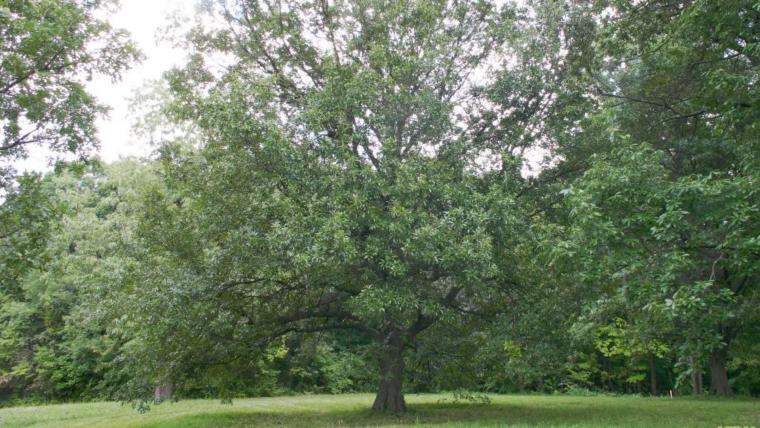
Backyard and Botanical Data Enable the Study of Rare Species

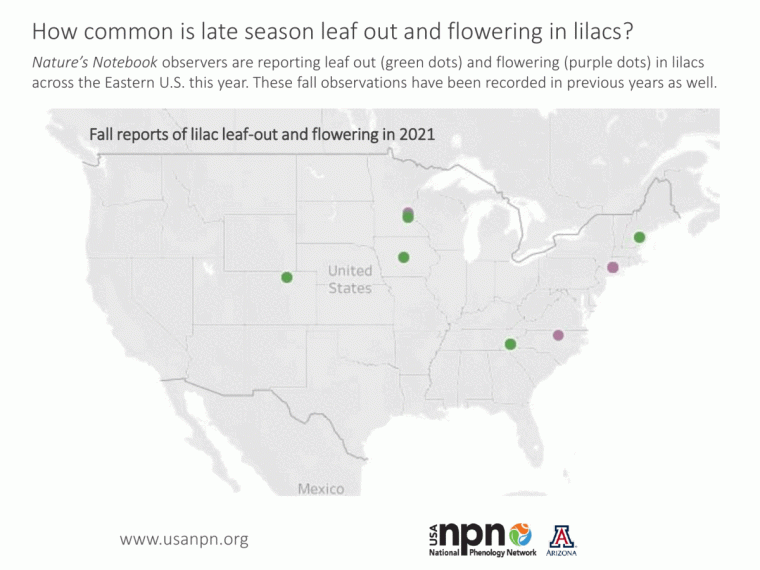
Some of our Nature' Notebook observers are reporting late season leaf out and flowering in lilacs this year. How uncommon is this late season phenology? Not too unusual, as the map shows.
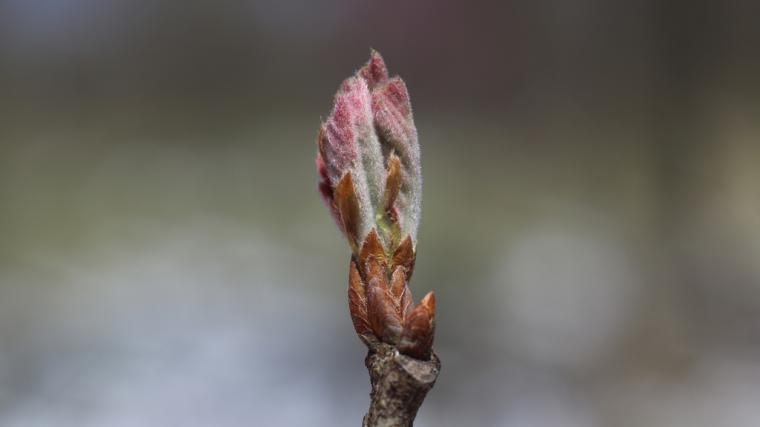
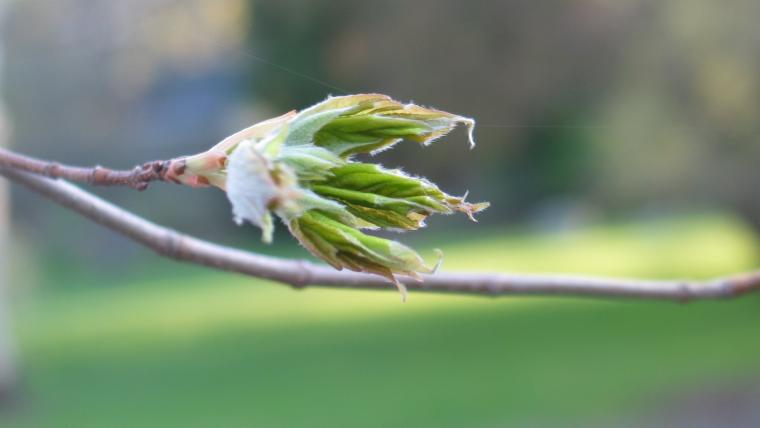
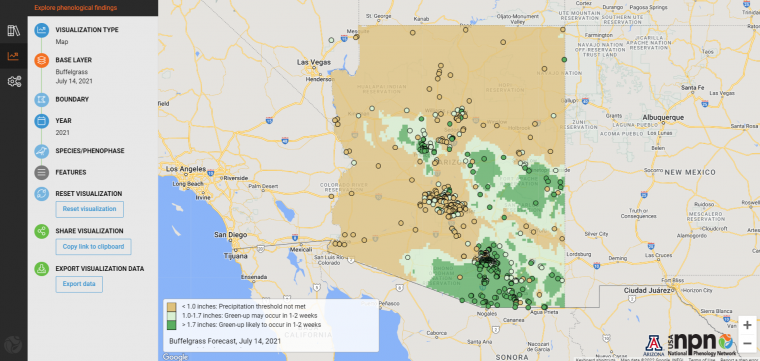
Each summer, we deliver a Buffelgrass Pheno Forecast to aid managers in knowing where and when invasive buffelgrass is green across Southern Arizona. The forecast is based on known precipitation thresholds for triggering green-up to a level where management actions are most effective. In 2021, we added weather station-based forecasts of buffelgrass green up to the gridded forecasts to provide managers with additional data about rainfall.
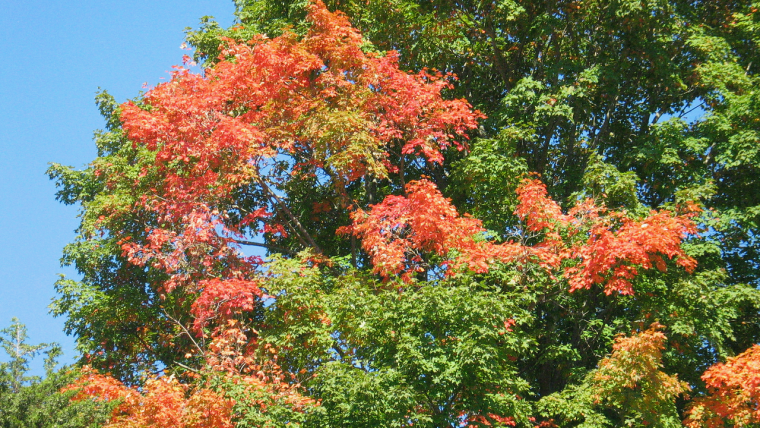
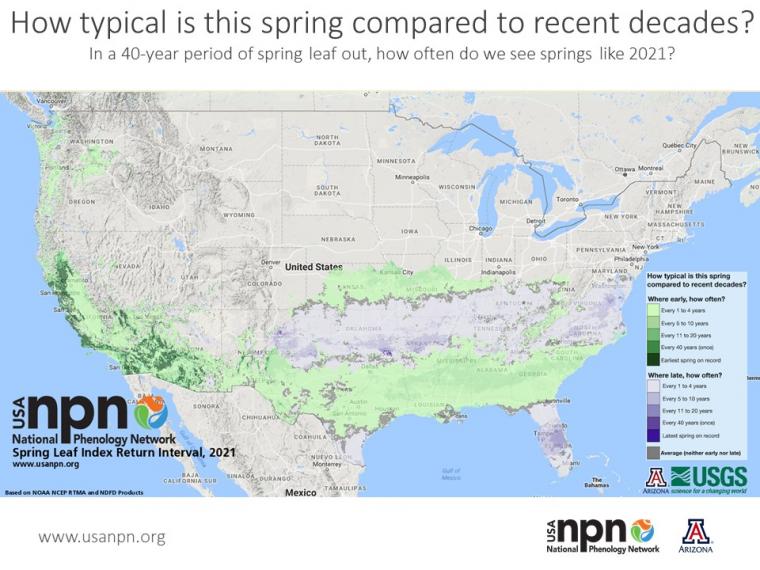
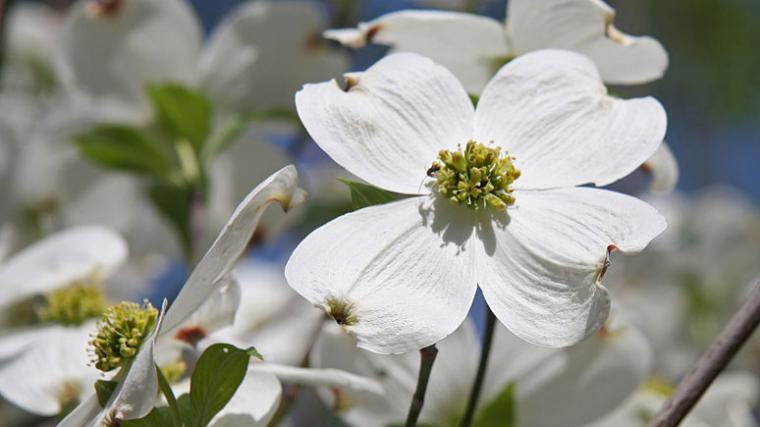
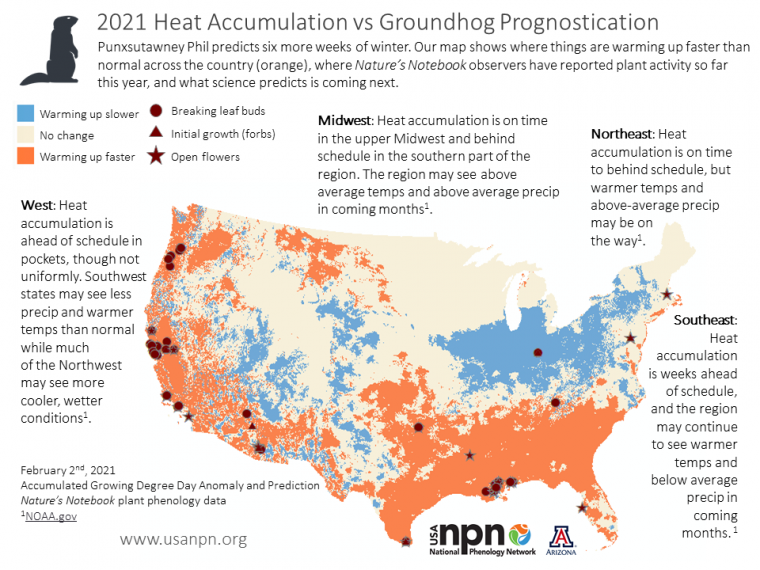
Punxsutawney Phil predicted six more weeks of winter! However, our maps of heat accumulation provide a more scientific look at how much heat has accumulated so far this year, and what's next.
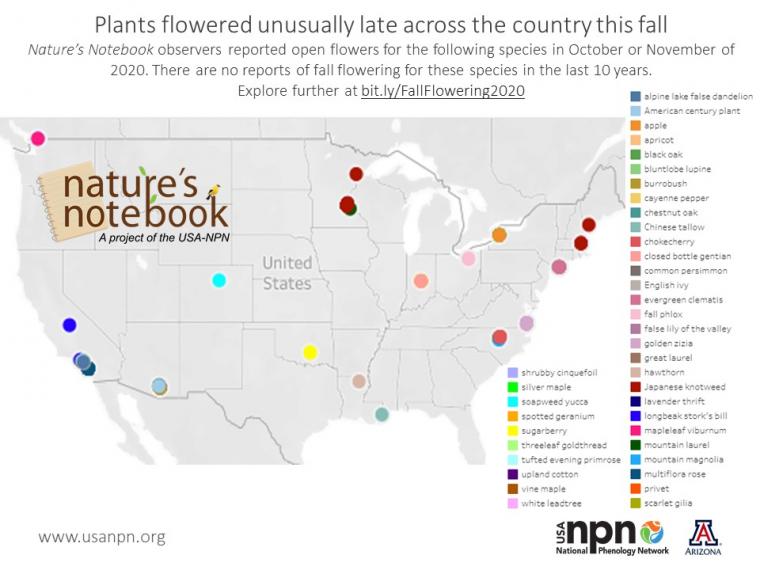
Nature's Notebook observers reported some oddly-timed flowering for species across the country this fall.